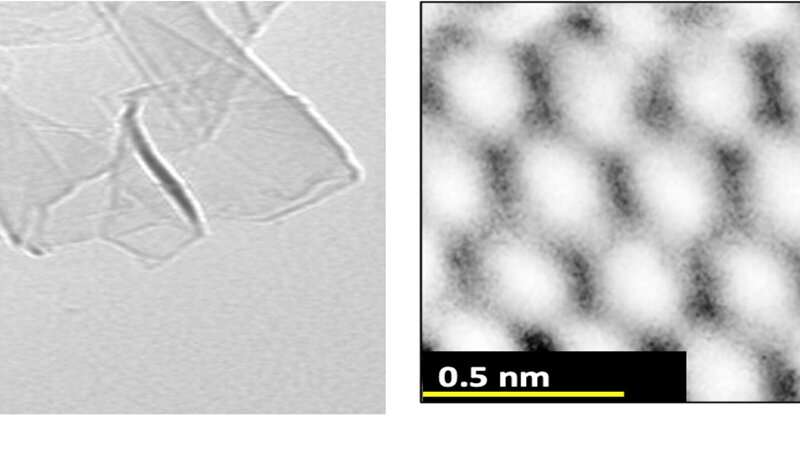Researchers discovered the world's first monolayer silicon carbide: Towards atomic-level semiconductor technologies

Prof. Sakineh Chabi from the University of New Mexico and her team recently discovered the world's first monolayer silicon carbide. The newly discovered 2D SiC materials have graphene-like hexagonal lattice, and average thickness of 0.25 nm (Figure 1).
Theoretical studies have predicted that 2D SiC has a stable graphene-like honeycomb structure and is a direct band gap semiconducting material. Experimentally, however, the growth of 2D SiC has challenged scientists for decades because bulk silicon carbide is a strong covalently bonded material. Additionally, bulk SiC exists in more than 250 polytypes, further complicating the synthesis process.
Professor Chabi led her team to demonstrate, for the first time, the successful isolation of 2D SiC from bulk SiC via a top-down approach, as reported in their recent paper titled "The creation of true two-dimensional silicon carbide," published in the journal Nanomaterials in 2021. Unlike many other 2D materials such as silicene that suffer from environmental instability, the created 2D SiC nanosheets are environmentally stable, and show no sign of degradation
As a wide bandgap semiconducting material with high thermal capability and high voltage breakdown, SiC is a leading material for high-power electronics, high-temperature applications, and quantum information processing. For example, SiC is considered the ideal material solution for the post-Moore era. However, the created 2D SiC material will outperform bulk SiC in several ways. As a result of reduced dimensionality, 2D SiC possesses an unusual set of electronic, optical, and structural properties, such as a direct wide band gap feature and angstrom-level thickness, that are very important for the next generation of semiconductors. Given the high maturity of SiC technologies (e.g., SiC wafers), the potential to convert 2D SiC to a real device is enormous.
This story is part of Science X Dialog, where researchers can report findings from their published research articles. Visit this page for information about ScienceX Dialog and how to participate.
More information:
Sakineh Chabi et al, The Creation of True Two-Dimensional Silicon Carbide, Nanomaterials (2021). DOI: 10.3390/nano11071799
Bio: Dr. Sakineh Chabi is a professor of mechanical engineering at the University of New Mexico. She has more than a decade of experience working with two-dimensional materials. Her current active research areas include two-dimensional silicon carbide and graphene technologies.